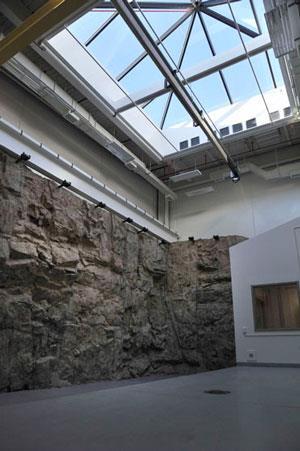
What does your role entail?
I do experimental work as part of a group. Our group primarily focuses on materials discovery for power/energy applications, particularly electrochemical systems – batteries, electrochemical capacitors (ECs, also known as supercapacitors) and to a lesser extent, fuel cells.
What are you working on now?
We are working on materials that have such design features as three-dimensionally porous architectures and deliberate structural defects to enhance the performance of lithium ion batteries, metal–air batteries (particularly zinc–air batteries) and a type of electrochemical capacitor that uses safe and low cost aqueous electrolytes.
What are latest developments in your field?
The electrochemical capacitor field is becoming much more popular. These are devices that charge and discharge much more quickly than batteries, typically on the order of a few seconds. They don’t have quite as much energy, but you don’t always need high energy density for particular applications. Sometimes, you need that rapid switching between charge and discharge states. Over the past 10 years, this has become a much more popular technology and we’ve been contributing to that by developing new materials that enable that kind of process.
What will the electrochemical capacitors be used for?
One of the biggest uses is in hybrid-electric systems, not only vehicles, but in things as mundane as elevators and shipyard cranes. A big benefit of ECs is being able to recapture energy on a short timescale, say 1–10 seconds. For example, as an elevator rises and falls, you can recapture a fraction of the energy that’s spent to raise the elevator. And the same can be done in a hybrid car, with regenerative breaking.
The NRL is opening a new facility that can replicate a rainforest and jungle. Tell us about it.
The NRL recently opened its ‘Laboratory for Autonomous Systems’ facility. Part of the purpose of this building is to provide an environment for NRL scientists to try their technologies in controlled microenvironments that mimic real-world settings to understand environmental effects on their performance. There’s a greenhouse, for example, that simulates a jungle, a desert area and a coastal area (see below for more information).
What kind of technology could be tested there?
Remote-controlled things: micro-air vehicles, sensor technology, robotics and autonomous systems. There’s a rock wall to test systems that the NRL is developing that are supposed to climb the wall like Spiderman. Other autonomous systems – air, ground and undersea platforms – can be tested in many scenarios.
How did you get to work at the NRL?
I did a postdoc there after graduate school and then I was fortunate to be hired into NRL’s ‘Advanced Electrochemical Materials’ section where I’ve been a staff member since 2000.
How does working at the NRL compare to other laboratories?
The NRL covers a broad array of science and engineering disciplines, with the scope of work ranging from very fundamental to much more applied and systems-oriented. Where I am in the chemistry division, it feels much like a university, and the research tends to be basic, with results published and presented in the public arena.
Do you find time for hobbies and if so, what are they?
I’m a musician.
What do you play?
I play guitar and sing in a country-ish rock duet. We have our first paid gig this coming October.
The laboratory for autonomous systems research
The NRL’s new facility – the laboratory for autonomous systems research – was opened on 16 March. It’s a simulation facility that can monitor sensors, power systems, unmanned vehicles, robots and humans in virtually every condition they could face in the world to see how they react to their surroundings and how they interact with each other. There are different environments – littoral, desert and tropical, for example, to test new technology and to identify opportunities to advance future defence technology.
The littoral area has a 45-foot by 25-foot by 5.5-foot deep pool with a wave generator that can produce directional waves and a slope that allows littoral environments such as the coast, lakesides and riversides to be recreated. In the desert area, there’s a 40-foot by 14-foot area of sand 2.5-feet deep and an 18-foot-high rock wall to put robots and sensors to the test. The tropical area is in a 60-foot by 40-foot greenhouse and it recreates a southeast Asian rain forest; it can produce rainfall of up to 15cm per hour, reaches temperatures of 27oC with 80% humidity. There’s also an outdoor test range, which is a 1/3rd acre forest with a waterfall, stream and pond, and terrain that includes large boulders for the robots to navigate. There’s also a room where testers can study how humans control the robots using eye trackers and multi-touch displays.








No comments yet